DNA Damage/DNA Repair
DNA damage is an alteration in the chemical structure of DNA, such as a break in a strand of DNA, a base missing from the backbone of DNA, or a chemically changed base as 8-OHdG. Damage to DNA that occurs naturally can result from metabolic or hydrolytic processes. Metabolism releases compounds that damage DNA including reactive oxygen species, reactive nitrogen species, reactive carbonyl species, lipid peroxidation products and alkylating agents, among others, while hydrolysis cleaves chemical bonds in DNA.DNA repair is a collection of processes by which a cell identifies and corrects damage to the DNA molecules that encode its genome. In human cells, both normal metabolic activities and environmental factors such as radiation can cause DNA damage, resulting in as many as 1 million individual molecular lesions per cell per day.
Products for DNA Damage/DNA Repair
- HDAC(58)
- DNA Synthesis(46)
- ATM/ATR(8)
- Topoisomerase(35)
- PARP(29)
- DNA Alkylating(9)
- Nucleoside Antimetabolite/Analogue(13)
- tankyrase(3)
- DNA Ligases(2)
- DNA Methyltransferase(9)
- MTH1(3)
- DNA-PK(7)
- Telomerase(4)
- Cat.No. Product Name Information
-
BCC5090
Flumequine
Flumequine (R-802) is a quinolone antibiotic, and acts as a topoisomerase II inhibitor, with an IC50 of 15 μM (3.92 μg/mL).

-
BCC1173
Cladribine
Cladribine is an adenosine deaminase inhibitor used to treat hairy cell leukemia and multiple sclerosis.

-
BCC1174
Dacarbazine
Dacarbazine(DTIC-Dome; DTIC) is an antineoplastic agent.

-
BCN5499
Genistein
Genistein, a soy isoflavone, is a multiple tyrosine kinases (e.g., EGFR) inhibitor which acts as a chemotherapeutic agent against different types of cancer, mainly by altering apoptosis, the cell cycle, and angiogenesis and inhibiting metastasis.

-
BCC4762
Azathioprine
Azathioprine(Azasan, Imuran; BW 57-322) is a drug that suppresses the immune system and is used in organ transplantation and autoimmune disease.
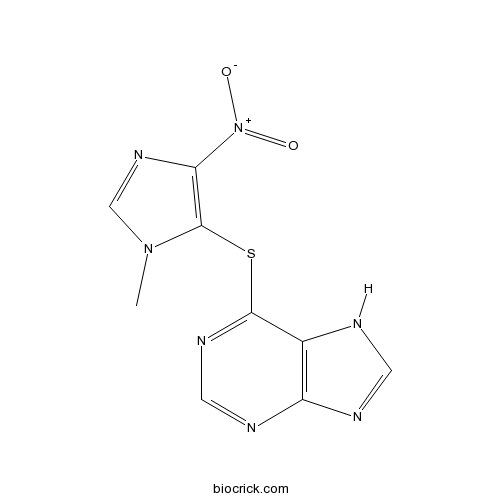
-
BCC5088
Beta-Lapachone
β-Lapachone (ARQ-501;NSC-26326) is a naturally occurring O-naphthoquinone, acts as a topoisomerase I inhibitor, and induces apoptosis by inhibiting cell cycle progression.
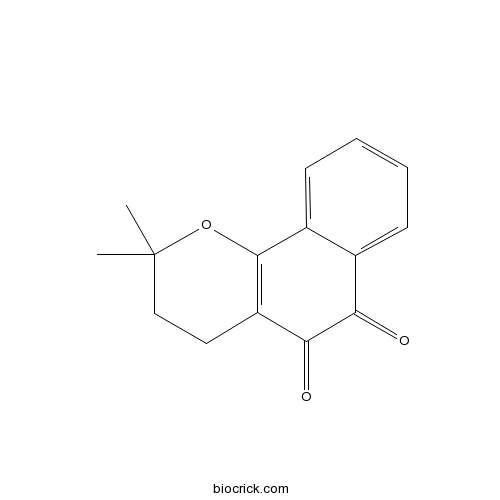
-
BCN5533
Ellagic acid
Ellagic acid is a natural antioxidant, and acts as a potent and ATP-competitive CK2 inhibitor, with an IC50 of 40 nM and a Ki of 20 nM.
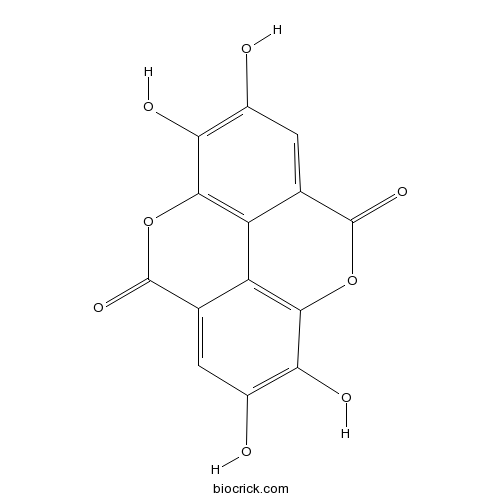
-
BCC1185
Cyclophosphamide
Cyclophosphamide is a synthetic alkylating agent chemically related to the nitrogen mustards with antineoplastic activity, a immunosuppressant.
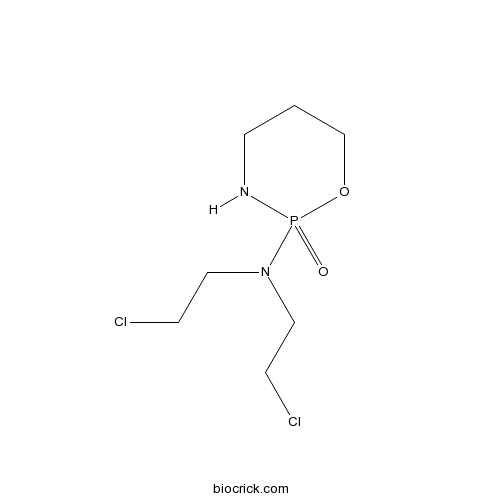
-
BCC1186
Mercaptopurine (6-MP)
6-Mercaptopurine is a purine analogue which acts as an antagonist of the endogenous purines and has been widely used as antileukemic agent and immunosuppressive drug.

-
BCC1187
Floxuridine
Floxuridine (5-Fluorouracil 2'-deoxyriboside) is a pyrimidine analog and known as an oncology antimetabolite. Floxuridine inhibits Poly(ADP-Ribose) polymerase and induces DNA damage by activating the ATM and ATR checkpoint signaling pathways in vitro. Floxuridine is a extreamly potent inhibitor for S. aureus infection and induces cell apoptosis. Floxuridine has antiviral effects against HSV and CMV.

-
BCC4309
Amsacrine
Amsacrine (m-AMSA; acridinyl anisidide) is an inhibitor of topoisomerase II, and acts as an antineoplastic agent which can intercalates into the DNA of tumor cells.

-
BCC7665
Ellipticine
Ellipticine (NSC 71795) is a potent antineoplastic agent; inhibits DNA topoisomerase II activities.

-
BCC5354
Thio-TEPA
Thio-TEPA is a DNA alkylating agent, with antitumor activity.

-
BCC1592
Genz-644282
Genz-644282 is a non-camptothecin inhibitor of topoisomerase I with potential antineoplastic activity(IC50=1.2 nM).

-
BCC2428
Tubacin
Tubacin is a potent and selective inhibitor of HDAC6, with an IC50 value of 4 nM and approximately 350-fold selectivity over HDAC1.

-
BCC4310
Amsacrine hydrochloride
Amsacrine hydrochloride (m-AMSA hydrochloride; acridinyl anisidide hydrochloride) is an inhibitor of topoisomerase II, and acts as an antineoplastic agent which can intercalates into the DNA of tumor cells.

-
BCC3742
Busulfan
Busulfan is a cell cycle non-specific alkylating antineoplastic agent.
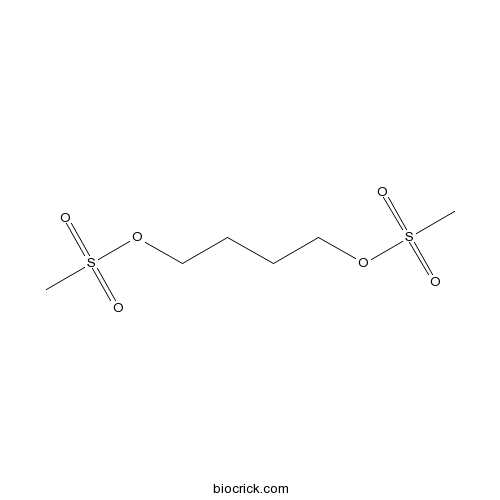
-
BCN5740
Costunolide
Costunolide, a sesquiterpene lactone, exhibits anti-inflammatory and anti-oxidant properties and mediates apoptosis.
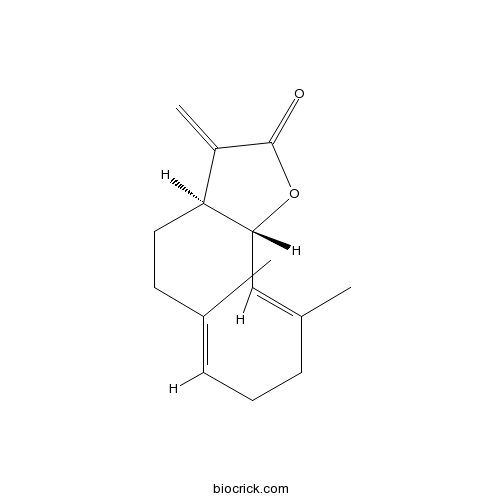
-
BCC1521
Deferasirox Fe3+ chelate
Deferasirox Fe3+ chelate (Exjade) is a rationally-designed oral iron chelator; its main use is to reduce chronic iron overload in patients who are receiving long-term blood transfusions for conditions such as beta-thalassemia and other chronic anemias.

-
BCC1192
Epirubicin HCl
Epirubicin hydrochloride (4'-Epidoxorubicin hydrochloride), a semisynthetic L-arabino derivative of doxorubicin, has an antineoplastic agent by inhibiting Topoisomerase. Epirubicin hydrochloride is a Forkhead box protein p3 (Foxp3) inhibitor and inhibits regulatory T cell activity.

-
BCC1194
Idarubicin HCl
Idarubicin hydrochloride is an anthracycline antileukemic drug. It inhibits the topoisomerase II interfering with the replication of DNA and RNA transcription. Idarubicin hydrochloride inhibits the growth of bacteria and yeasts.

-
BCC7860
Puromycin dihydrochloride
Puromycin Dihydrochloride (CL13900 dihydrochloride), an aminonucleoside antibiotic, inhibits protein synthesis.

-
BCN5796
Adenosine
Adenosine is a nucleoside composed of a molecule of adenine attached to a ribose sugar molecule (ribofuranose) moiety via a β-N9-glycosidic bond.
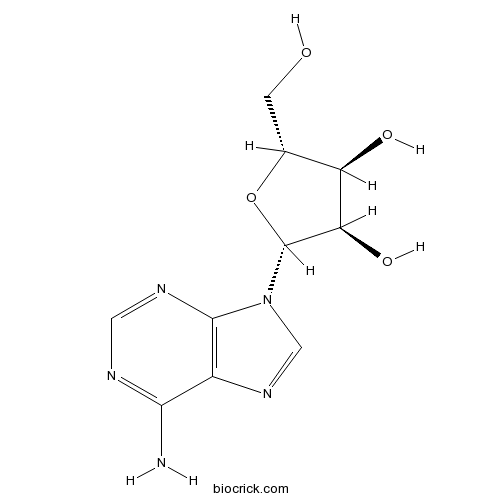
-
BCN4090
Uridine
Uridin is a glycosylated pyrimidine-analog containing uracil attached to a ribose ring (or more specifically, aribofuranose) via a β-N1-glycosidic bond.
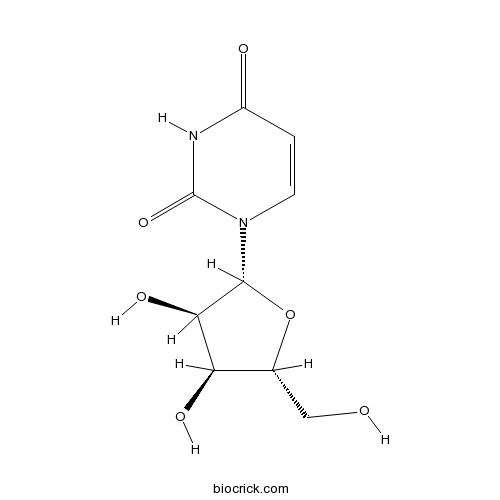
-
BCC2475
KU 55933
KU-55933 is a potent ATM inhibitor with an IC50 and Ki of 12.9 and 2.2 nM, respectively, and is highly selective for ATM as compared to DNA-PK, PI3K/PI4K, ATR and mTOR.

-
BCC3605
Trichostatin A (TSA)
Trichostatin A (TSA) is a potent and specific inhibitor of HDAC class I/II, with an IC50 value of 1.8 nM for HDAC.

-
BCC5293
5-BrdU
5-BrdU is a nucleoside analog that competes with thymidine for incorporation into DNA. 5-BrdU is commonly used in the detection of proliferating cells.

-
BCC3929
Acyclovir
Acyclovir (Aciclovir) is a guanosine analogue and an orally active antiviral agent. Acyclovir inhibits HSV-1 (IC50 of 0.85 μM), HSV-2 (IC50 of 0.86 μM) and varicella-zoster virus. Acyclovir can be phosphorylated by viral thymidine kinase (TK), and Acyclovir triphosphate interferes with viral DNA polymerization through competitive inhibition with guanosine triphosphate and obligatory chain termination. Acyclovir prevents bacterial infections during induction therapy for acute leukaemia.
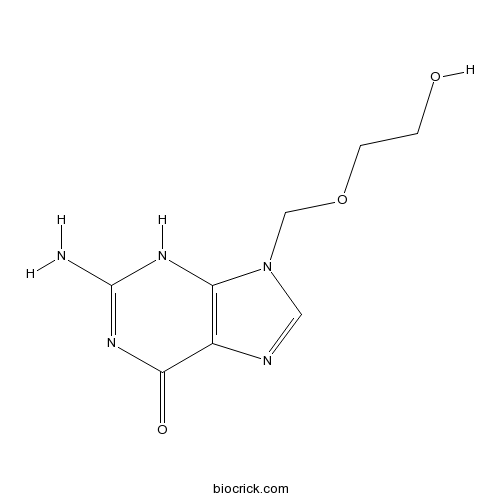
-
BCC1214
Carmofur
Carmofur is a derivative of fluorouracil, an antimetabolite used as an antineoplastic agent.

-
BCC3932
Oxaliplatin
Oxaliplatin is a DNA synthesis inhibitor. Oxaliplatin causes DNA crosslinking damage, prevents DNA replication and transcription and causes cell death. Oxaliplatin time-dependently inhibits human melanoma cell lines C32 and G361 with IC50 values of 0.98 μM and 0.14 μM, respectively. Oxaliplatin induces cell autophagy.
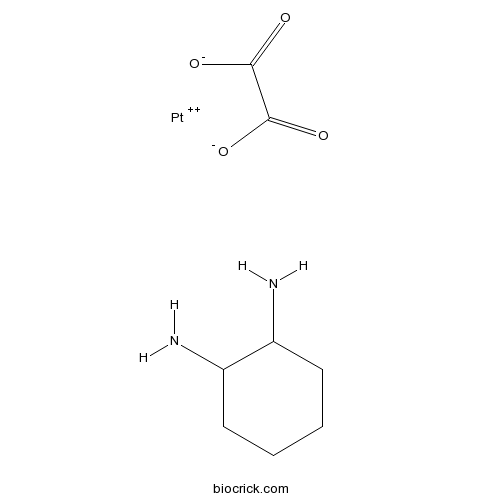
-
BCC7707
L189
L189 is a novel human DNA ligase inhibitor, inhibits hLigI/III/IV with IC50 of 5/9/5 μM.
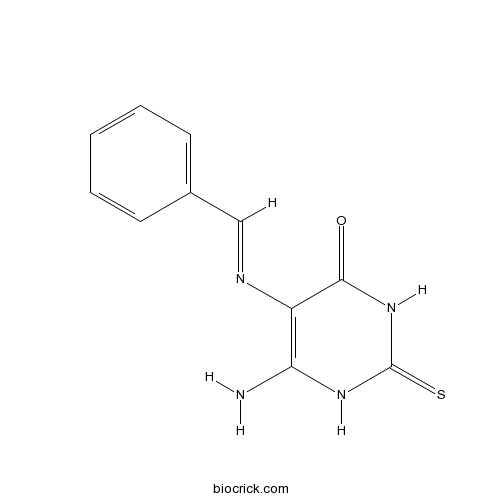
-
BCC1216
Altretamine
Altretamine is an alkylating antineoplastic agent.
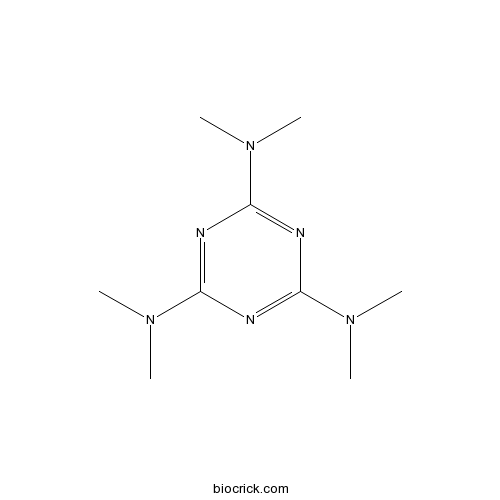
-
BCN3415
Cytidine
Cytidine is a nucleoside molecule that is formed when cytosine is attached to a ribose ring, cytidine is a component of RNA.

-
BCC4162
Orotic acid
Orotic acid (OA) is an intermediate in pyrimidine metabolism.
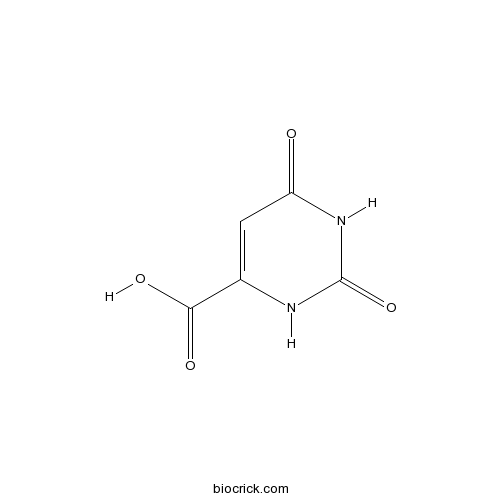
-
BCN5918
4'-Demethylepipodophyllotoxin
4'-Demethylepipodophyllotoxin(4'-DMEP) is a key intermediate compound for the preparation of podophyllotoxin-type anti-cancer drugs; a potent inhibitor of microtubule assembly.
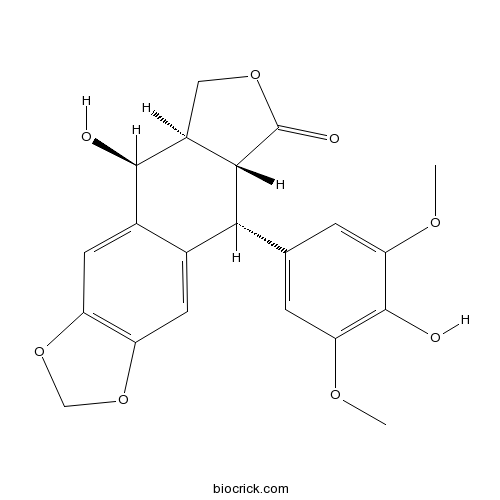
-
BCC4116
Cytarabine hydrochloride
Cytarabine hydrochloride, a nucleoside analog, causes S phase cell cycle arrest and inhibits DNA polymerase. Cytarabine inhibits DNA synthesis with an IC50 of 16 nM. Cytarabine hydrochloride has antiviral effects against HSV.

-
BCC1249
Amonafide
Amonafide is a topoisomerase II inhibitor and DNA intercalator that induces apoptotic signaling by blocking the binding of Topo II to DNA.
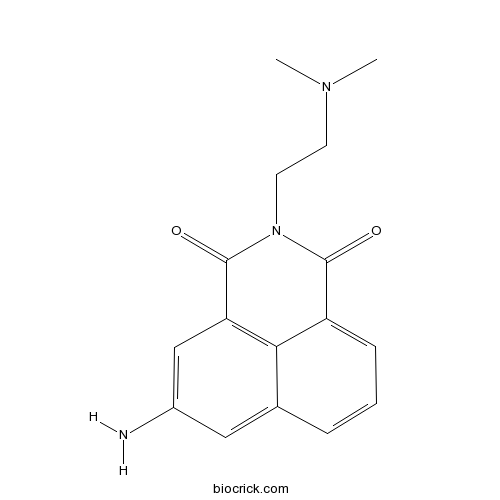
-
BCC5109
CRT0044876
CRT0044876 is a potent and selective APE1 inhibitor with IC50 of ~3 μM.
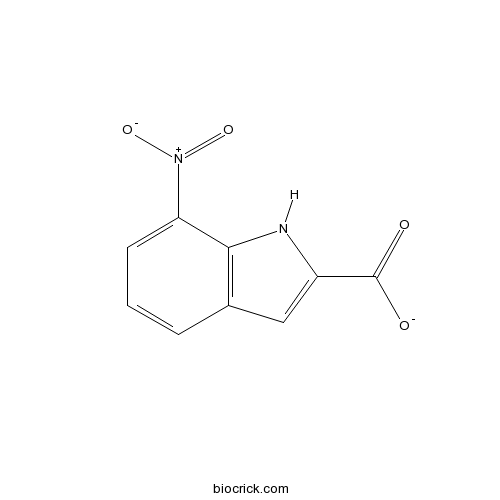
-
BCC5092
Pirarubicin
Pirarubicin is an anthracycline antibiotics, acts as a topoisomerase II inhibitor, and is a widely used for treatment of various cancers, in particular, solid tumors.

-
BCC2146
Mocetinostat (MGCD0103, MG0103)
Mocetinostat (MGCD0103) is a potent, orally active and isotype-selective HDAC (Class I/IV) inhibitor with IC50s of 0.15, 0.29, 1.66 and 0.59 μM for HDAC1, HDAC2, HDAC3 and HDAC11, respectively. Mocetinostat shows no inhibition on HDAC4, HDAC5, HDAC6, HDAC7, or HDAC8.

-
BCC4450
Adenine
Adenine is a purine derivative and a nucleobase with a variety of roles in biochemistry.

-
BCC2150
ITF2357 (Givinostat)
Givinostat hydrochloride monohydrate (ITF-2357 hydrochloride monohydrate) is a HDAC inhibitor with an IC50 of 198 and 157 nM for HDAC1 and HDAC3, respectively.
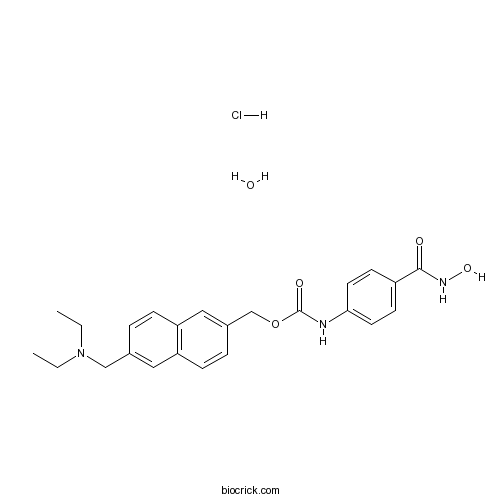
-
BCC3681
Fludarabine Phosphate (Fludara)
Fludarabine (phosphate) is an analogue of adenosine and deoxyadenosine, which is able to compete with dATP for incorporation into DNA and inhibit DNA synthesis.
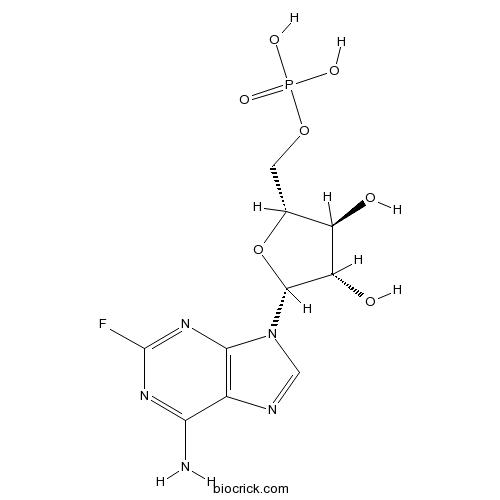
-
BCC1476
CHAPS
CHAPS is a zwitterionic nondenaturing detergent for solubilizing membrane proteins.
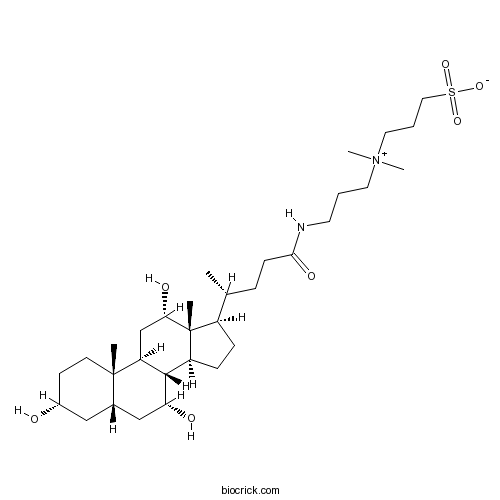
-
BCC1256
Leflunomide
Leflunomide is a pyrimidine synthesis inhibitor, inhibiting dihydroorotate dehydrogenase, and acts as a disease-modifying antirheumatic drug.
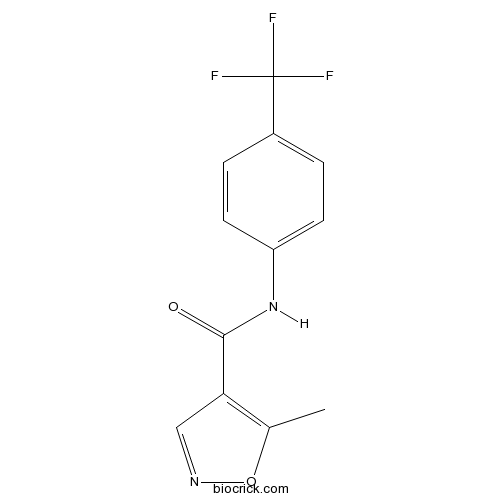
-
BCN4318
Camptothecin
Camptothecin (Campathecin) is a potent DNA enzyme topoisomerase I inhibitor, with an IC50 of 679 nM.

-
BCC2155
PCI-24781 (CRA-024781)
Abexinostat (CRA 024781) is a novel pan-HDAC inhibitor mostly targeting HDAC1 with Ki of 7 nM.
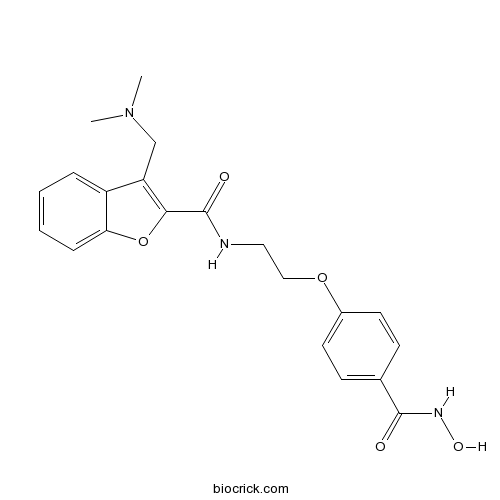
-
BCC6507
6-Thio-dG
6-Thio-2'-Deoxyguanosine is a nucleoside analogue that can be incorporated into de novo-synthesized telomeres by telomerase.
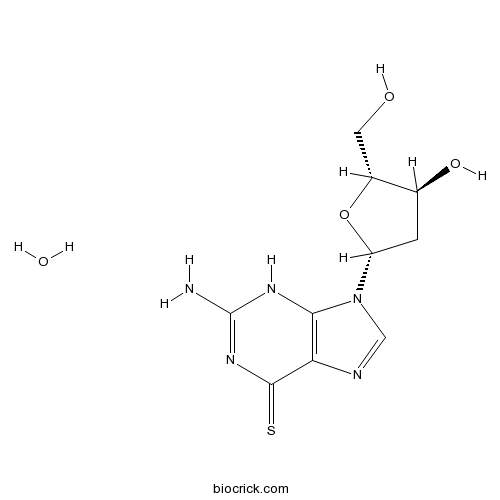
-
BCC3848
Rifaximin (Xifaxan)
Rifaximin(Xifaxan) is an orally administered, semi-synthetic, nonsystemic antibiotic derived from rifamycin SV with antibacterial activity.
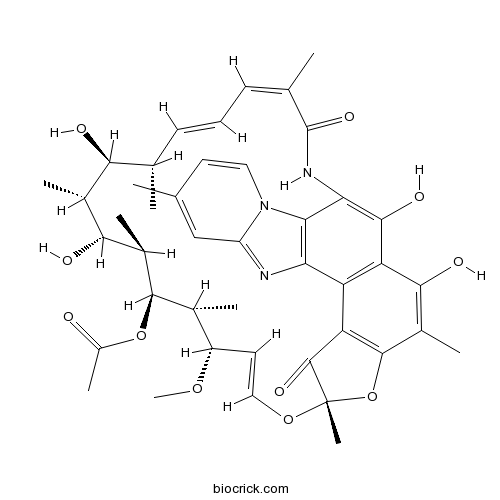
-
BCC2526
Ofloxacin
Ofloxacin (Hoe-280) is a fluoroquinolone whose primary mechanism of action is inhibition of bacterial DNA gyrase.
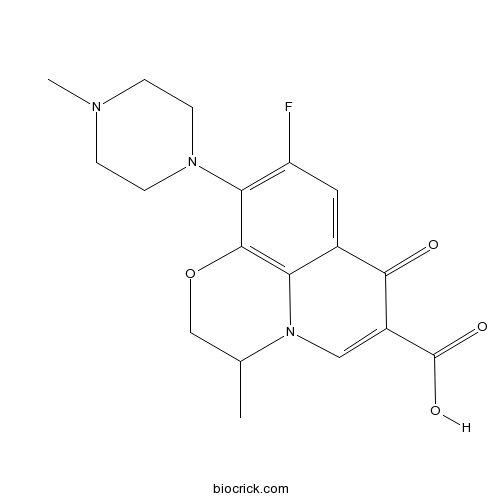
-
BCC2422
NCH 51
PTACH (NCH-51) is a SAHA-based novel inhibitor of human HDAC. PTACH exerts potent growth inhibition against various human cancer cells, with EC50 values ranging from 1 to 10 μM.

-
BCC2151
MC1568
MC1568 is a selective class II (IIa) histone deacetylas (HDAC II) inhibitor, used for cancer research.
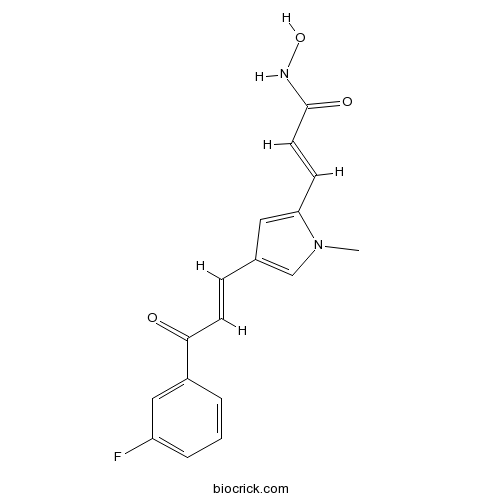
-
BCC4386
Temozolomide
Temozolomide (NSC 362856) is an oral active DNA alkylating agent that crosses the blood-brain barrier. Temozolomide is also a proautophagic and proapoptotic agent. Temozolomide is effective against tumor cells that are characterized by low levels of O6-alkylguanine DNA alkyltransferase (OGAT) and a functional mismatch repair system. Temozolomide has antitumor and antiangiogenic effects.

-
BCC2165
Resminostat (RAS2410)
Resminostat (RAS2410; 4SC-201) is a potent inhibitor of HDAC1, HDAC3 and HDAC6, with mean IC50 values of 42.5, 50.1, 71.8 nM, respectively, and shows less potent activities against HDAC8, with an IC50 of 877 nM.

-
BCC6381
RX-3117
RX-3117(TV-1360; Fluorocyclopentenylcytosine) is novel a cytidine analog; shows anticancer activity in several cancer cell lines, including gemcitabine-resistant variants.

-
BCC2147
JNJ-26481585
Quisinostat (JNJ-26481585) is an orally available, potent HDAC inhibitor with IC50s of 0.11 nM, 0.33 nM, 0.64 nM, 0.46 nM, and 0.37 nM for HDAC1, HDAC2, HDAC4, HDAC10, HDAC11, respectively.

-
BCC4060
LY2334737
LY2334737 is an nucleoside analog and is an orally active prodrug of Gemcitabine. LY2334737 exhibits inhibitory activity against enterovirus A71 (EV-A71) infection. LY2334737 has antiviral and anticancer effects.
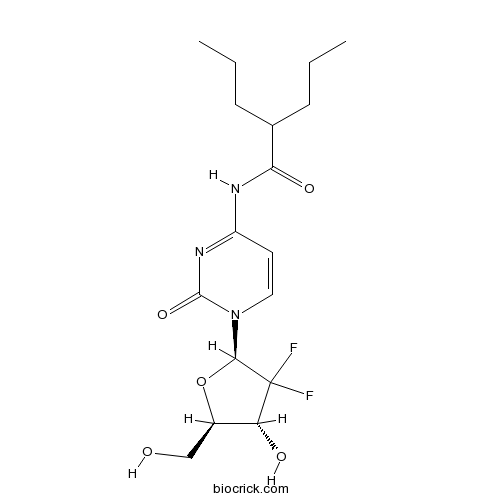
-
BCC5580
BMH-21
BMH-21 is a small molecule DNA intercalator that binds ribosomal DNA and inhibits RNA polymerase I (Pol I) transcription; does not cause phosphorylation of H2AX.

-
BCC3694
Bleomycin Sulfate
Bleomycin sulfate is a DNA synthesis inhibitor with potent antitumor activity.

-
BCC3911
CGK733
CGK733 is a potent ATM/ATR inhibitor, used for the research of cancer.
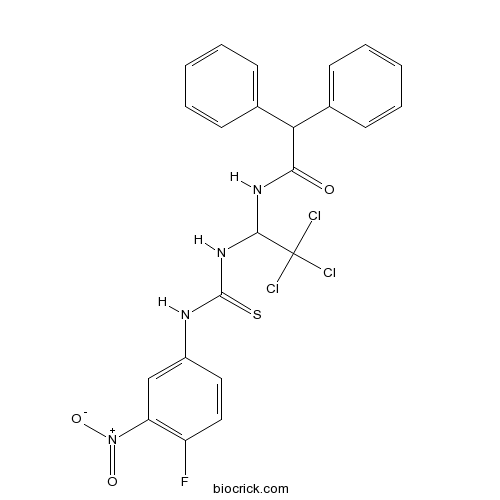
-
BCC1998
TH-302
Evofosfamide (TH-302) is a hypoxia-activated prodrug with IC50 of 10 μM and 1000 μM in hypoxia (N2) and normoxia (21% O2), respectively.

-
BCC3699
KU-60019
KU-60019 is an improved analogue of KU-55933, with IC50 of 6.3 nM for ATM in cell-free assays, 270- and 1600-fold more selective for ATM than DNA-PK and ATR,and is a highly effective radiosensitizer.

-
BCC6489
MN 64
MN-64 is a potent tankyrase 1 inhibitor, with IC50s of 6 nM, 72 nM, 19.1 μM, and 39.4 μM for TNKS1, TNKS2, ARTD1 and ARTD2, respectively.
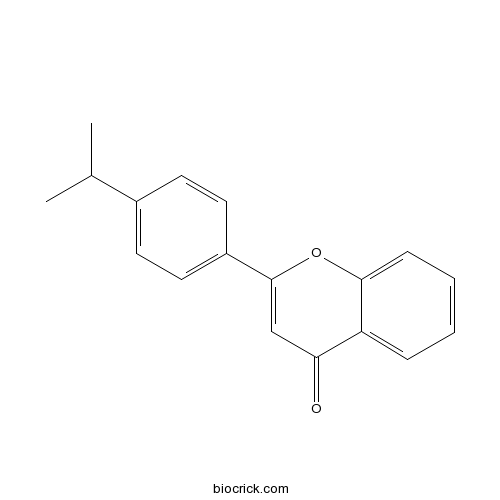
-
BCC2152
Pracinostat (SB939)
Pracinostat is a potent histone deacetylase (HDAC) inhibitor, with IC50s of 40-140 nM, used for cancer research.
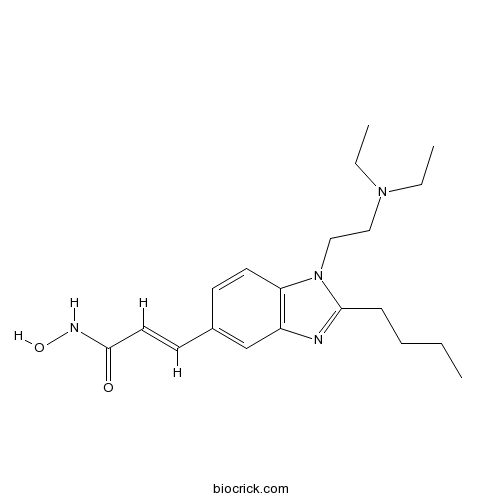
-
BCC2161
AR-42 (OSU-HDAC42)
AR-42 is an HDAC inhibitor with IC50 of 30 nM. Phase 1.
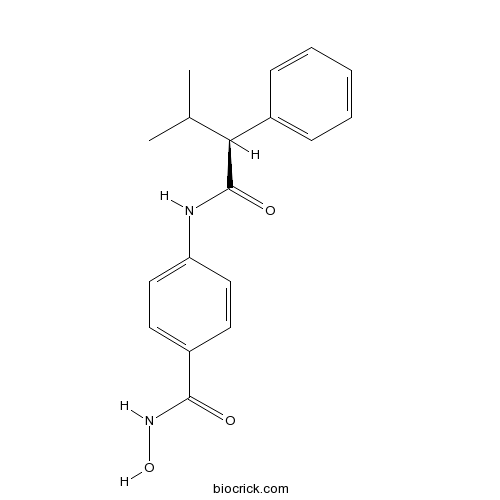
-
BCC2426
TC-H 106
Pimelic Diphenylamide 106 is a slow, tight-binding inhibitor of class I HDAC (HDAC 1, 2, and 3, with IC50 values of 150 nM , 760nM, and 370 nM, respectively), demonstrating no activity against class II HDACs.

-
BCC2420
KD 5170

-
BCC3784
Gemcitabine
Gemcitabine (LY 188011) is a pyrimidine nucleoside analog antimetabolite and an antineoplastic agent. Gemcitabine inhibits DNA synthesis and repair, resulting in autophagyand apoptosis. Gemcitabine inhibits the growth of BxPC-3, Mia Paca-2, PANC-1, PL-45 and AsPC-1 cells with IC50s of 37.6 nM, 42.9 nM, 92.7 nM, 89.3 nM and 131.4 nM, respectively.

-
BCC2148
PCI-34051
PCI-34051 is a potent and selective HDAC8 inhibitor with IC50 of 10 nM, with >200-fold selectivity over the other HDAC isoforms.
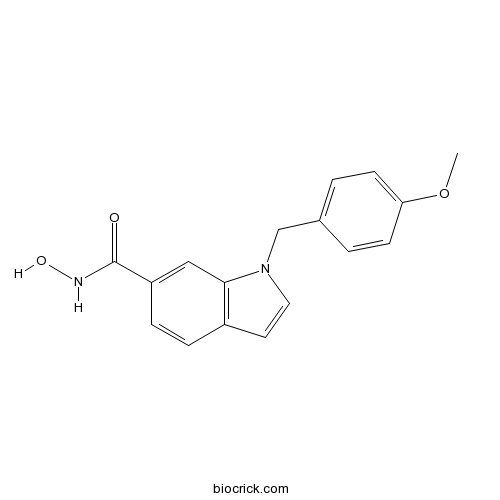
-
BCC2427
TCS HDAC6 20b
Selective HDAC6 inhibitor
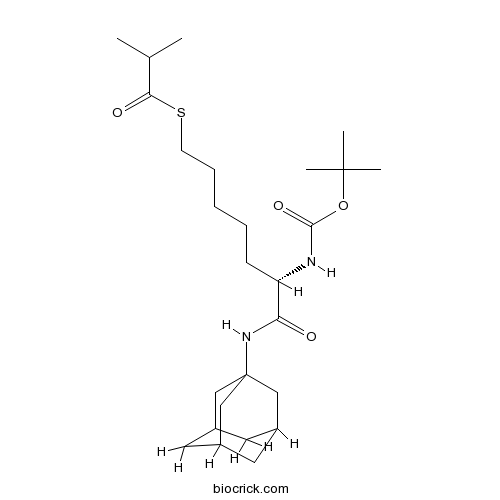
-
BCC2490
Irinotecan
Irinotecan is a topoisomerase I inhibitor, preventing religation of the DNA strand by binding to topoisomerase I-DNA complex.

-
BCC5635
Penciclovir Sodium
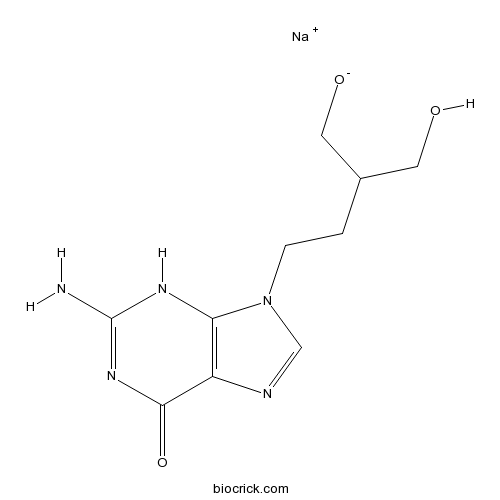
-
BCC4260
Valproic acid
Valproic acid (VPA; 2-Propylpentanoic Acid) is an HDAC inhibitor, with IC50 in the range of 0.5 and 2 mM, also inhibits HDAC1 (IC50, 400 μM), and induces proteasomal degradation of HDAC2. Valproic acid activates Notch1 signaling and inhibits proliferation in small cell lung cancer (SCLC) cells. Valproic acid sodium salt is used in the treatment of epilepsy, bipolar disorder and prevention of migraine headaches.

-
BCC2157
Droxinostat
Droxinostat(NS41080) is a selective inhibitor of HDAC3, HDAC6, and HDAC8 with IC50 of 16.9, 2.47 and 1.46 μM, respectively; > 8-fold selective against HDAC3 and no inhibition to HDAC1, 2, 4, 5, 7, 9, and 10.




